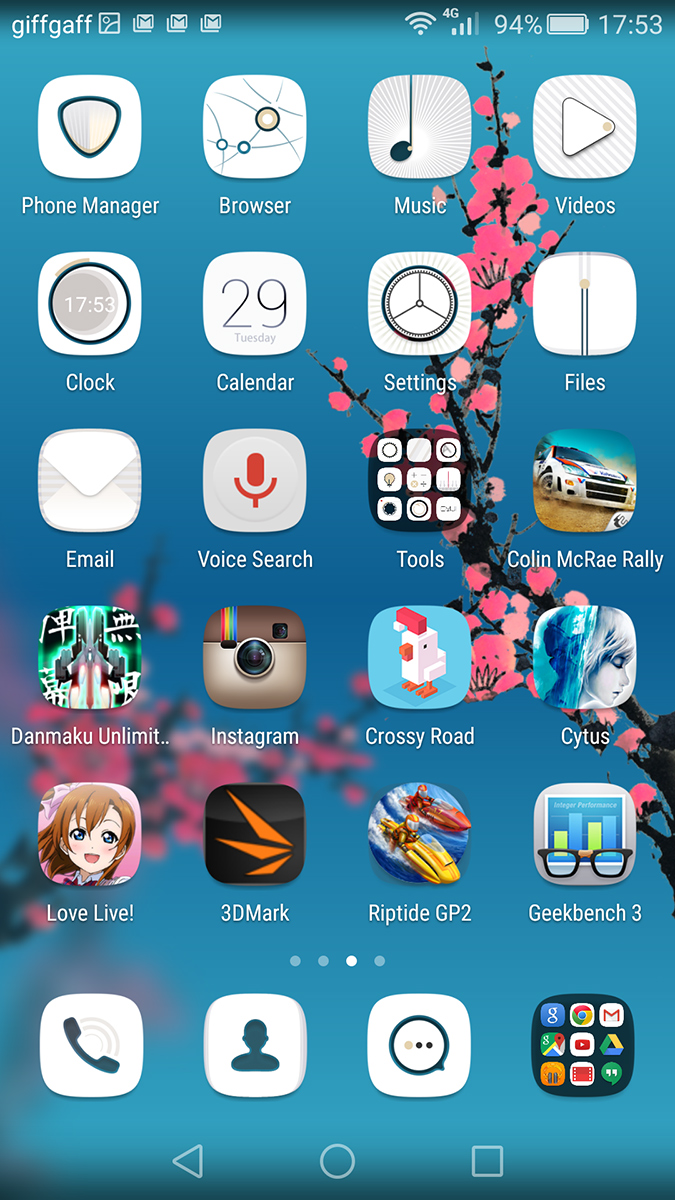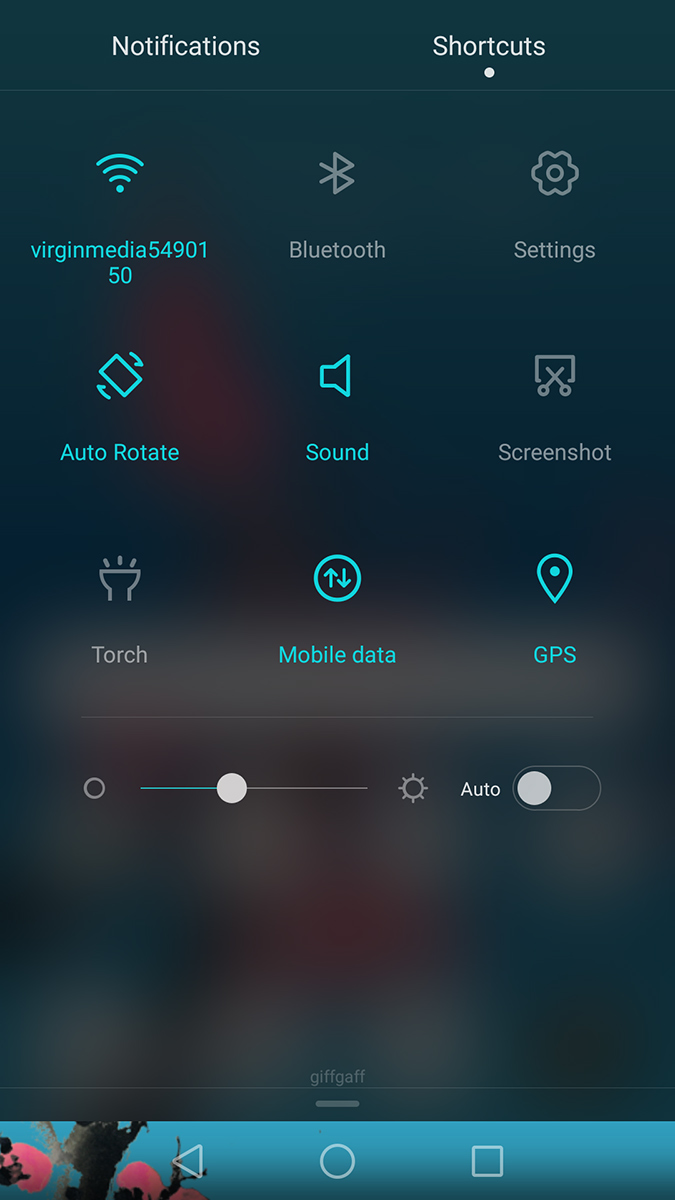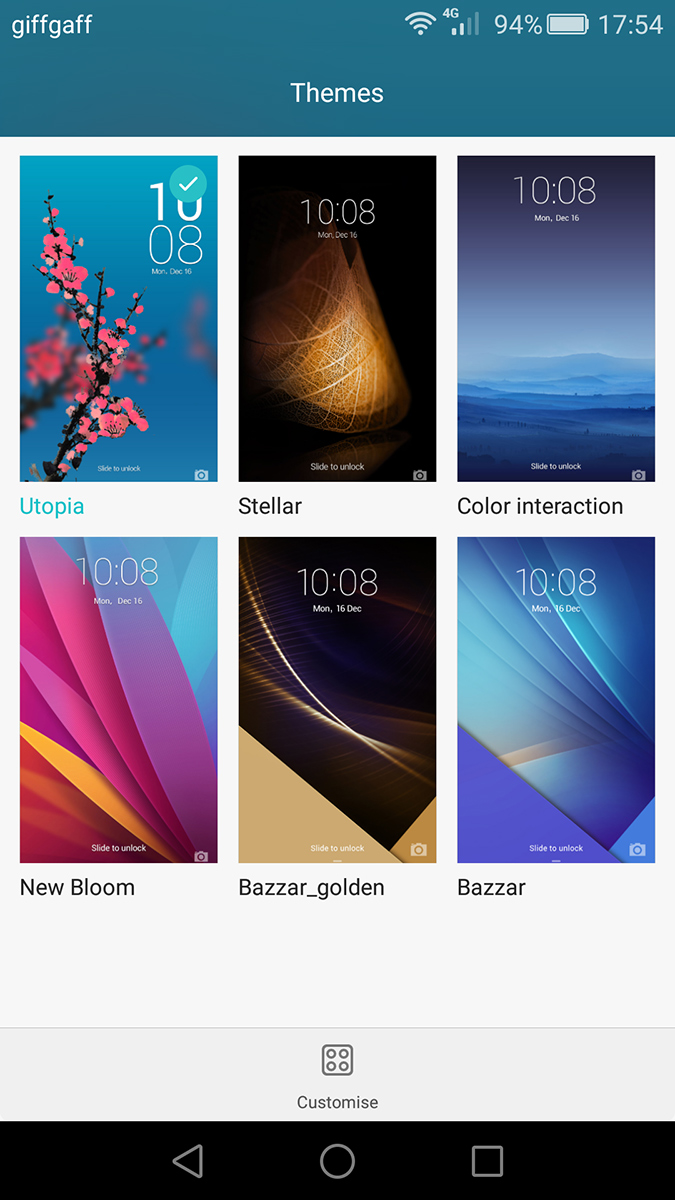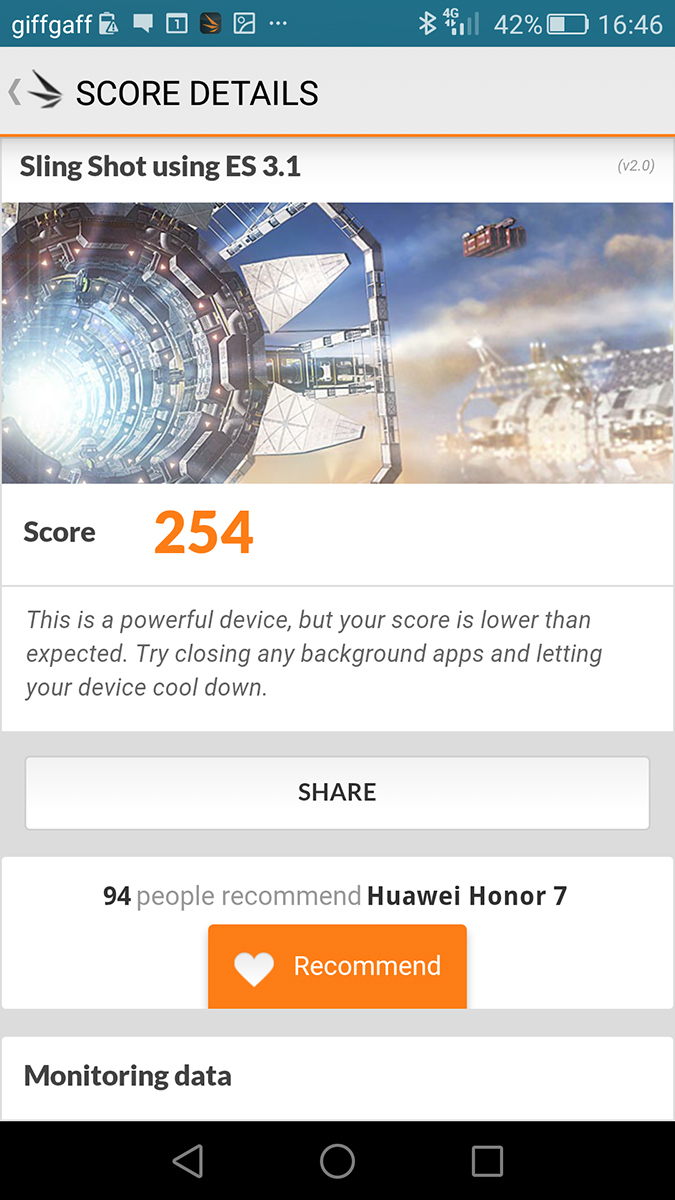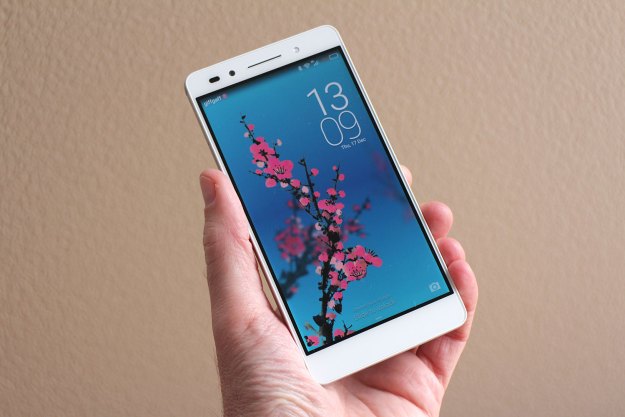
“The Honor 7 is affordable, but too weak to play many mobile games.”
- Great camera
- High quality hardware design
- Fast fingerprint sensor
- Low price
- Not officially available in the U.S.
- No NFC
- Not enough power
Huawei may not be the most known smartphone manufacturer, in the U.S. at least, but even fewer will have heard of Honor, its spin-off, easier-to-pronounce brand. The idea is to sell stylish and powerful devices through an online store at a wallet-tempting price. It’s the model adopted by hyper-successful Chinese brand Xiaomi, and by growing name OnePlus, among others.
In January, Huawei officially launched the Honor brand in the United States, so it makes sense to closely examine a device bearing its name now. If it’s awful, then why pay much attention when the Honor name hits U.S. shores? The Honor 7 is already in sale in the U.K. and other countries, making it the obvious choice to check out. While it’s actually damn good in some areas, it’s not the perfect budget phone but we were hoping for in others. Is it still a worthy buy? Let’s find out.
Diet-shunning aluminum body
The price tag is £250 in the U.K., or about $370, but this isn’t representative of a final U.S. price, should the phone be made officially available. For comparison, the OnePlus 2 starts at £320, the HTC One A9 is £400, and the Moto X Style is £340; so the Honor 7 is a good, cheap option. Despite this, it’s not dull, boring, or equipped with a processor better suited for an upmarket calculator.
In these days of ultra-slim phones, the Honor 7 shuns a diet, and remains happy with a 8.5mm, 157 gram frame. It has proper feel to it, and sits perfectly in your hand, where you cradle a smooth and cool-to-the-touch aluminum back panel. It’s bookended with plastic panels for the antenna to operate, but unlike the ZTE Axon Elite, they’ve been blended in, and aside from a subtly different texture, you’d struggle to separate them from the metal body at first glance.
The edges have been neatly chamfered, the sleep/wake key beautifully recessed, and the screen seems to sit away from the body itself, giving the phone an unusual and rather space-age appearance. Get past the fact it’s not a super thin model, and the Honor 7 is a stunner, packed with detail and tactile design decisions. Not that this should come as much of a surprise. Huawei made the P8, still one of the best looking phones of 2015, and the Honor 7 could be its sibling that isn’t afraid to scarf down a burger now and then. There’s no worrying flimsiness, no odd creaks, and no mismatched gaps or panels — the Honor 7 is a strong, well-built phone.
Gorgeous screen, manageable OS
Mounted in its surprisingly compact frame is a 5.2-inch LCD (IPS-NEO) touchscreen with a 1,920 x 1,080 pixel resolution. It’s likely the same panel used on the Huawei P8, and is equal to the screen in the OnePlus 2, with bright colors and excellent contrast. It’s almost spoiled by an annoying auto-brightness control, which thankfully can be turned off; it continuously set the level too low for me. This was especially frustrating when browsing photos and watching video, where it dampened the screen’s otherwise good looks.
The Honor 7 is an excellent camera phone. It takes pictures you’ll want to keep and look at again.
No, it’s not a 1,440p display like the Galaxy S6 or the LG G4, but that’s OK. The Honor 7 is half the price. The software shown on the screen is often where Huawei phones fall down, but has that failing been inherited by Honor? It runs Android 5.0 Lollipop with Huawei’s own EMUI interface, an identical to the system on the P8. The version installed is far better than old Huawei interfaces, and it’s smoother, consistently designed, and with enough cool little features to keep it from being an annoyance.
Coming from the ZTE Axon Elite’s MiFavor UI it felt like a distinct improvement, but still not close enough to stock Android, or even OnePlus’s OxygenOS, to appease Android purists. There’s less bloatware than the ZTE phone, too. Some may be irritated by the lack of an app drawer — I still don’t really understand why, the apps are all still visible — but the expandable notifications with quick response buttons in the drop down notification drawer are very handy. Huawei has added various custom themes to the OS, and while the icon packs are way over the top, the morphing wallpapers look amazing. It’s a stupid thing, offering no function at all, but always made me smile.
Huawei’s EMUI has come a long way from the disasters of old, and is getting closer to Samsung and LG’s approach to an Android skin: more Android, less nonsense. It’s not there yet though, especially if you’ve used a Moto G or Nexus phone.
Struggles with performance
There’s a noticeable smoothness to the way Android operates on the Honor 7. Apps, menus, and home screens slide back and forth like they’re coated in syrup — thick syrup, actually, and it’s almost as if the smoothness is there to cover up sluggishness. Is it? Powering the Honor 7 is Huawei’s octa-core, 1.5GHz Kirin 935 with 3GB of RAM, which is a very similar chip to the Kirin 930 inside the P8 on paper; which displayed none of that syrupy behavior.
Put it through some benchmarking tests, and things aren’t good. It scores a very low 1,758 Multi-Core on GeekBench 3 — the Snapdragon 810 in the OnePlus manages 4,558 on the same test, and even the P8 doubles this score. Benchmarks aren’t everything, but this is a worry. Delving into some games revealed the Honor 7 does struggle for raw power.
It was fine on Crossy Road, but using HD mode on Danmaku Unlimited 2 caused considerable slowdown when the screen was busy. The phone never got hot, but was certainly warm to the touch. The 3DMark gaming benchmark exposed its shortcomings even more. In the Slingshot ES3.1 test it scored just 254. The OnePlus 2 managed 928. Ouch.
Using the phone for everyday situations, this lack of guts was never an issue. Messaging, social networking, Web browsing, and video ran without fault. However, if you’re a hardcore mobile gamer, you’ll definitely want to look elsewhere.
Great camera
We return to more positive ground when snapping away with the camera. The Honor 7 has a 20-megapixel rear camera, and an 8-megapixel selfie cam with an LED flash, meaning it’s very well equipped for a phone at this price. The rear camera has an f/2.4 aperture, but that didn’t stop it blurring the background nicely on a variety of shots, and the focus is suitably fast.
The front camera’s LED flash is muted, and doesn’t wash out faces in low-light, plus there’s an unusual Perfect Selfie mode to experiment with. It takes three different selfies — front, side, and looking down — and uses the data to improve future selfies, plus some tweaking from you such as lightening and smoothing skin, thinning the face, or enlarging the eyes. The Honor 7 does an amazing job of transforming mundane selfies into those worthy of superstars. Whether this appeals depends on your level of vanity.
Elsewhere, there’s a slow-motion video mode, a ‘good food’ mode for serial (or should that be cereal?) foodie-Instagrammers, and the same Light Painting modes found on the P8. These let you play around with the shutter speed, taking pictures that capture light trails, fireworks, or stars in the sky.
Overall, the Honor 7 is an excellent camera phone. No, it can’t match the LG G4 or the Galaxy S6, but the extra modes are fun and effective. It takes pictures you’ll want to keep and look at again.
Fingers and buttons
Under the camera lens is a fingerprint sensor. It rivals the OnePlus 2 for speed, and beats the iPhone’s Touch ID system on functionality. Unlocking from a black sleep screen is instant, taking you straight to the home screen. Once you’re there, swipe down on the sensor to drag down the notification panel, tap to go back a step, or in the camera app, tap and hold to activate the shutter. There are various options to customize how the fingerprint sensor is used. It’s great to see it utilized so well.
It doesn’t have the guts to run the very latest graphically intensive games without slowing down.
Then Huawei goes and ruins it by not including NFC. It’s the same mistake as OnePlus, and renders the Honor 7 useless for use as a contactless mobile wallet in the future. Not everyone will care today, but it reduces the Honor 7’s usefulness in the long term.
On the opposite side to the power button, Huawei has added a Smart Key, which can be programmed to perform different functions. These include turning on the flashlight, opening specific apps, and bringing up a Google search page. The Ultra-Snapshot is the most helpful, waking the screen from sleep and taking a picture in around a second each time. The functions are varied enough for most to find the Smart Key helpful, and it’s a cool additional feature.
Finally, we come to the battery. The 3100mAh cell returned at least a day’s worth of heavy use — using Huawei’s power manager, it never visited the charger with less than 20-percent remaining on any day — and I got two days light to medium use.
Not one for the demanding user
The DT Accessory Pack
Up your game and the get the most out of your gear with the following extras, hand-picked by our editors:
Huawei Honor 7 Case ($10)
GripTight GorillaPod Stand For Phones ($15)
Huawei Watch (Stainless Steel) ($400)
The Honor 7 has one major problem. It lacks real processing power. The screen is bright and colorful, the camera takes great pictures, and the body is strong and easy to hold. It just doesn’t have the necessary guts to run the very latest graphically intensive games without slowing down. A lack of NFC is a pain as well, and means this phone cannot use Android Pay, among other things.
There was a time when this could be forgiven on a £250 phone, but it’s not so easy today. For around the same price it’s possible to pick up a Moto X Play, or if you don’t mind a slightly older phone, the Nexus 6 can be found for a little more money. Spend more, and the OnePlus 2 and the Nexus 5X come into view. None of which suffer from a lack of overall power.
This prevents us from recommending the Honor 7 to gamers and those wanting to keep the phone for several years. However, if gaming’s not for you, then the Honor 7 is excellent in most other areas, priced very competitively, and will serve you well.
Highs
- Great camera
- High quality hardware design
- Fast fingerprint sensor
- Low price
Lows
- Not officially available in the U.S.
- No NFC
- Not enough power






